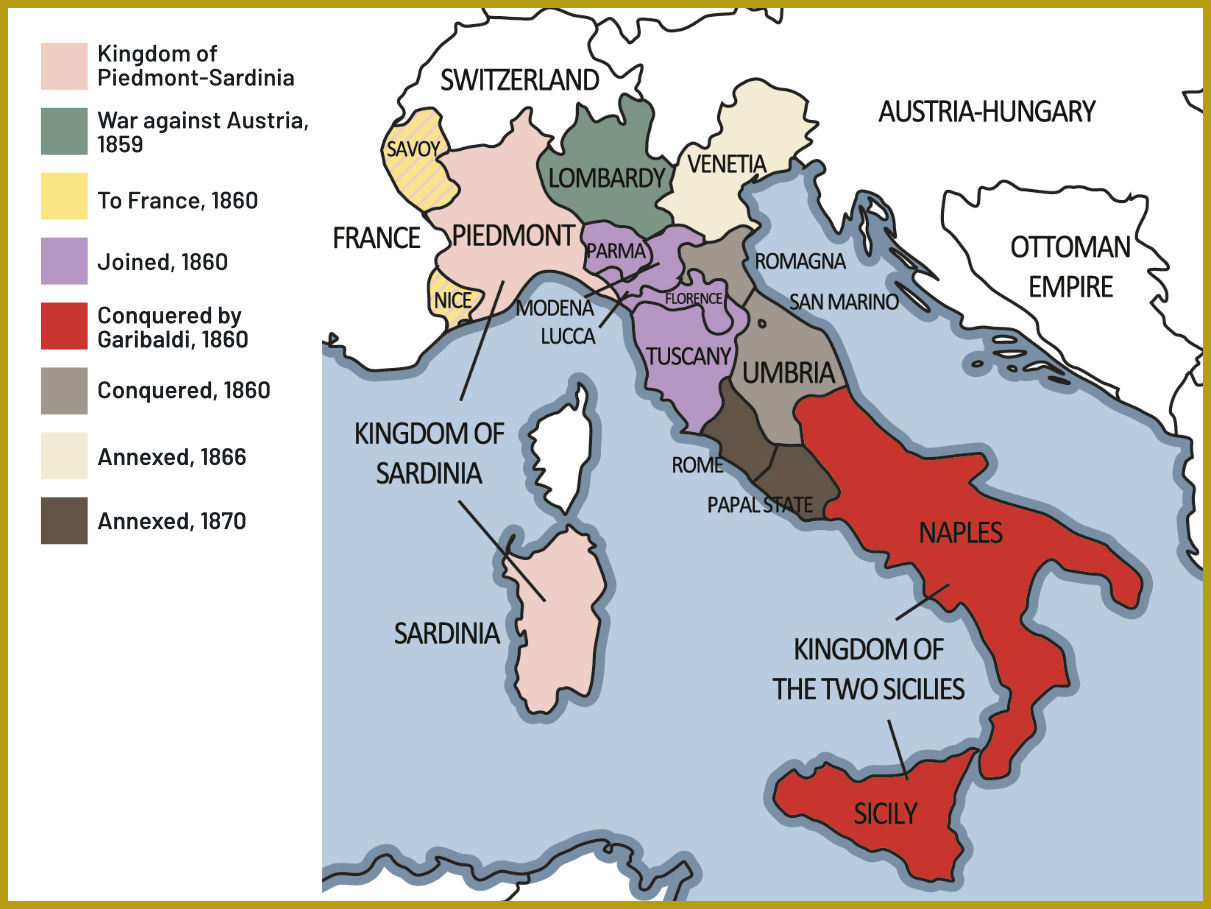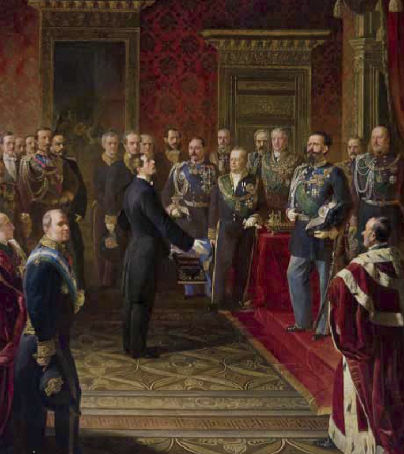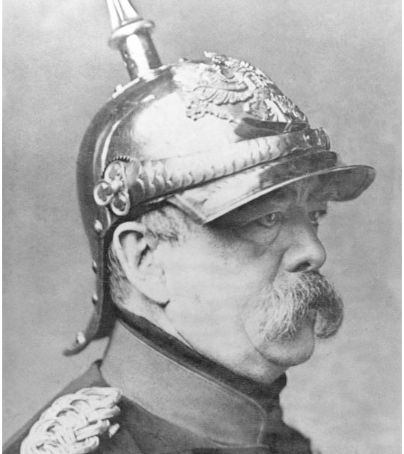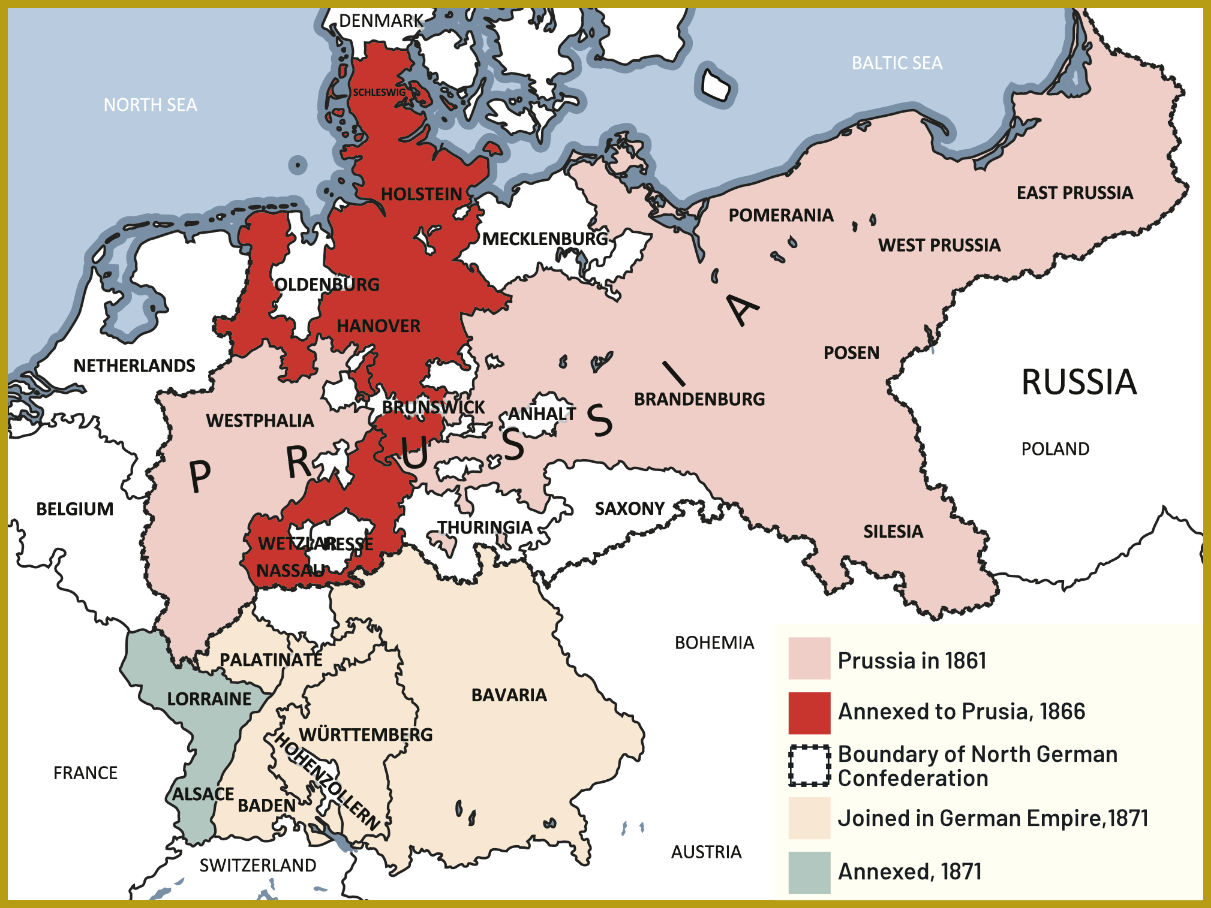Nationalism and Liberalism were the two main dynamic forces of Europe in the 19th century. The conservative system of Alliances and Congresses created to maintain absolutist regimes as a means to keep stability in Europe did not work, and even the most reactionary countries saw the spread of successive revolutionary waves.
Liberalism. The reaction of absolutism did not stop the spread of liberal ideas throughout Europe. A succession of revolutionary waves changed the political map of Europe during the 19th century. Liberal ideas expanded in continental Europe having the references of the Enlightenment and the American and French Revolutions. Liberal States provided the structured political alternative to the old regime: absolutism was rejected and new Constitutions, where the values of freedom and division of powers were stressed, were proclaimed. A limited participation of people in governmental affairs was allowed. On the economic side, liberal governments abolished any limitation to production and distribution, and guaranteed the right to property.
Nationalism. Nation refers to a feeling of belonging to a community that shares certain features, such as a common language, common values, history, customs and traditions, religion, etc. Nevertheless, the concept is unclear and different characteristics can be emphasized depending on the specific national case: the German Volk is based on links of culture (literature, traditions) and blood that bind the individuals within the community. The French idea of patrie is related to the territory and the language spoken by the people established on the national soil.
In the context of the beginning of the 19th century, Nationalism became a powerful political force, above all in the places where national communities did not enjoy a government of their own. As a matter of fact, in the restored Europe after the fall of Napoleon there were on the one hand national communities without a political organization (such as Polish, Magyars, Finnish, or even Italians and Germans, divided into different States). On the other hand, there were also imperial States that dominated different nationalities (Russia, Austria, the Ottoman Empire). The supreme aspiration of these nationalities was to constitute a political system free from imperial subjugation or external interference.
The revolutions of 1820s. In 1821 the Greeks rebelled against the Ottoman Empire. Since the Greeks were supported by Russia, France and Great Britain (Lord Byron died while fighting against the Turks), the Ottomans recognized Greek independence in 1827.
The revolutions of 1830s. The absolutist tendencies of king Charles X of France led to a revolutionary movement that created a new constitutional monarchy in France. King Louis Philip of Orleans satisfied only the more moderated bourgeois elements, and popular classes were mostly excluded from government. On the other hand, Belgian people rebelled against the rule of The Netherlands. Belgium obtained its independence and elected Leopold of Saxony-Coburg as a king
The revolutions of 1848. The revolutionary movements of 1848 pursued the establishment of democracies based on the principles of universal suffrage, popular sovereignty and the definition of certain economic and social rights. In Paris, popular demonstrations ended in the abdication of the king and the proclamation of the Republic: the new Constitution declared the right to work and the freedom of strike. In Vienna, the government of prince Metternich fell, and Czechs, Italians and Hungarians rebelled, but the imperial troops crushed the revolutionaries. In Frankfurt an Assembly of representatives of the German States met in order to attain the unification of Germany, but this objective failed.
THE UNIFICATION OF ITALY AND GERMANY
Italian unification. Italy was divided into different political entities; some territories were even subjected to a not-Italian rule. In the South, the Kingdom of the Two Sicilies (under the Bourbon dynasty) had not the strength enough to lead the unification. In the North, Milan (Lombardy) and Venice belonged to the Austrian Empire; the little principalities of Parma, Modena or Tuscany were equally unable to contribute decisively. Rome could also play a unifying role, but the Pope rejected nationalism, liberalism and democracy as the pillars of a new Italian State. Only the Kingdom of Sardinia-Piedmont had the economic and political dynamism to fulfil the nationalist objective of unification.

As a matter of fact, Piedmont was too weak to fight alone against the Austrian Empire. Being aware of this limitation, Cavour, prime minister of Sardinia, sought the support of the French Empire of Napoleon III: in exchange of the territories of Nice and Savoy (interview of Plombières), France helped Piedmont to conquer Milan in 1859. In 1860 a spontaneous popular movement offered the sovereignty of the Italian central territories to king Vittorio Emanuele II. Moreover, an army of volunteers led by Giuseppe Garibaldi (1.000 "red shirts") invaded Sicily and soon reached Naples. The Southern territory was also absorbed by the new kingdom of Italy.

Wikiart
The new kingdom needed the alliance of a powerful State to annex the remaining territories of Venice and Rome. Prussia followed its own unification process, and consequently supported the Italian aspirations. As a result of the Austrian defeat in the battle of Sadowa against Prussia (1866), Italy received Venice. Similarly Rome, protected by the French troops, adhered to Italy after the battle of Sedan (1870), which meant a new triumph of Prussia, the fall of Napoleon III and the subsequent withdrawal of the imperial army from the capital of the new Italian State.
German unification. Germany was also divided into a number of independent territories. Here Austria and Prussia were the two poles of unification. Nevertheless, Prussia proved to be more dynamic in economic and military terms. Here also a monarch -Wilhelm I- appointed a capable prime minister able to lead the process: kanzler Otto von Bismarck. Bismarck needed two wars to bring about a unified Germany.

Wikiart
Firstly, as a result of the Austrian defeat in the battle of Sadowa (1866), Austria would be excluded from the unification process. Prussian victory also implied the constitution of a North German Confederation and the annexation of the duchies of Schleswig and Holstein. Next step would be the defeat of France, whose emperor Napoleon III feared the birth of a powerful German State under the rule of Prussia. The pretext of the Franco-Prussian war was the question of the Spanish succession. Queen Isabella II fled the country after a revolution in 1869, and Prussia had offered prince Leopold of Hohenzollern-Sigmaringen as a candidate to the throne. He was rejected by France, which had a candidate of its own. The publication of the Ems telegram meant the war and a new Prussian victory in Sedan (1870). France surrendered, a new Republic was proclaimed in France, and Paris was occupied by the German troops. On January 1871, in the Hall of Mirrors of Versailles, the Second German Empire or Reich was proclaimed, with the king of Prussia as its first emperor (Kaiser). Formerly French Alsace and Lorraine were annexed to Germany, and so were the Southern German territories (Bavaria, Baden, Württemberg).
The creation of two new States in Europe meant the end of the balance of power created after the end of the Napoleonic Empire in continental Europe. Above all the foundation of a powerful Germany gave rise to a new period of German political, industrial, economic and cultural ascendancy in Europe. The diplomatic ability of Bismarck after the unification preserved this position without serious opposition; things would change with a new Kaiser on the throne.

